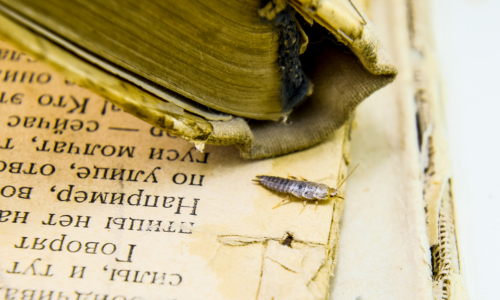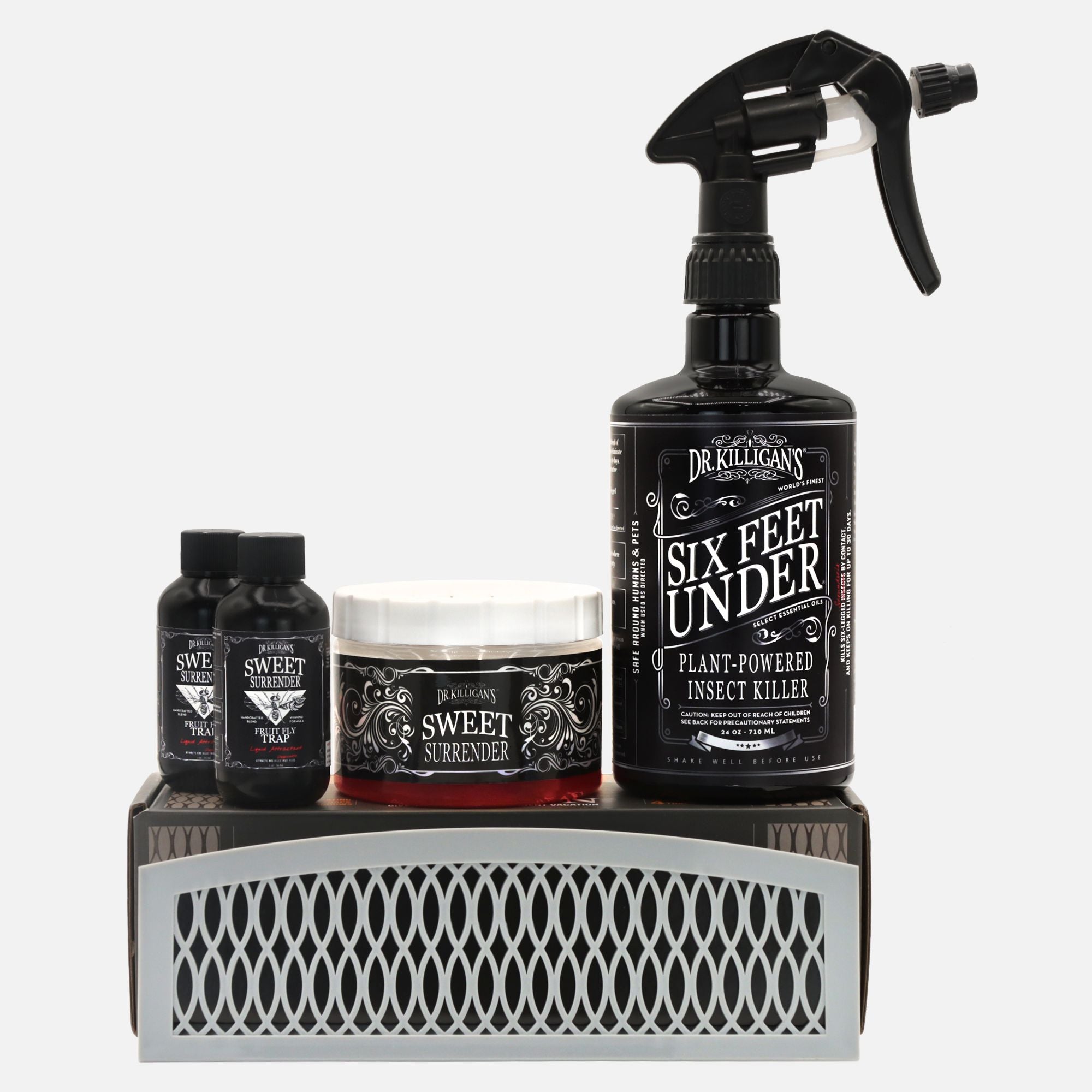I recently decided to clean out a few boxes of books in our storage unit. As I gingerly lifted up one of the heavier thick cardboard frames from a shoulder-height shelf, and because I didn’t see another soul around, I obnoxiously (and very loudly) began to sing to myself about the importance of a good lift. "Bend my hips, bend my knees, squat, squat, squat, now close to body, close to body, straight-en…and lift." (The last thing I wanted to do was schedule a visit to my chiropractor.)
As I slowly began to set the heavy load down on the cool, slick concrete, I felt something—very fast, very light—scurry across my hand. With a few short breaths and the words "…close to body, close to body…" caught in my throat, I heard a slight thug as the box trembled slightly on the dark ground.
What is a silverfish?
Name
Silverfish get their name from both their color and their fish-like shape and movements. They have metallic colored scales and conduct a rapid side-to-side motion as they run, and they run quickly (only on horizontal surfaces) when they are alarmed. Have you ever heard of the Silverfish Dance? Me either.
Appearance

A silverfish reminds me of an earwig. A very slight difference, one you will probably only know if you have smashed one of these small intruders with a quick pop of your fist (isn’t that how we all quickly smash bugs?) is that silverfish have three—three mind you—straight appendages protruding from the rear of their body, whereas earwigs only have two. Too, silverfish are a silver color, whereas earwigs are usually black or brown. I’d probably notice the color first. I think you probably would too.
They are wingless, can nearly reach the length of a nickel at 12 to 19 millimeters in length (a nickel being 21.21 mm), have a flattened body, and are the shape of a teardrop, a carrot, or a fish, (depending on the onlooker’s point of view).
Diet
These insects can survive for nearly a year (up to 300 days) without food if water is present. For their water intake, finding enough to quench their thirst is quite simple, as droplets of water form under the sink in your humid kitchen or in the recesses of your steamy bathroom. For their dining pleasure, they need cellulose, which is the main component of paper, cardboard, and textiles made of cotton or other plant fibers. Cellulose can be found in your grandmother’s Fun with Dick and Jane books or that long saved 1969 article about Apollo 11 moon landing that is tucked away in long-forgotten-ago box in the attic of your parents house (or perhaps your home now, as your parents are "downsizing"). In addition to newspapers and books, silverfish also enjoy feasting on wallpaper, photos, fabrics, glue, and plaster.
Livestyle
They like moist, humid areas with little foot traffic and lots of food sources. In your home, you’re most likely to find them in a muggy bathroom, damp basement, potentially dank laundry room, or sultry attic.
A typical discovery of silverfish may come at 2am, when a sudden urge to use the lavatory wakes you, as these wingless insects are nocturnal and can get stuck in your slippery wall-mounted porcelain sink. They prefer night-time feasting as their compound eyes are sensitive to light, feeling their way around with their very discerning threadlike antenna.
In terms of their lifespan, the life of a silverfish is lengthy for an insect. They live anywhere from three to six years, but can live for up to eight years. Once a female silverfish reaches adulthood, which takes several months, she can produce anywhere from two to 20 eggs a day for the remainder of her life.
Do silverfish bite?
The jaws of silverfish are quite weak. Instead of biting, they create more of a scrape or a long drag across a food surface. I’m thankful that we can’t hear it. I wonder if it would sound like nails on a chalkboard? Because they’re unable to puncture your skin or that of your pet, there’s no need to worry about anyone being bitten by a silverfish. Let your fear go.
In addition, silverfish aren’t known to carry pathogens or other damaging diseases and they won’t crawl into your ear at night, or anytime really.
What are signs of a silverfish infestation?
In their wake, they may leave you three barely detectable signs of their presence.
- light gray spots, as their jaws rake across the pages of your book
- yellow fecal matter or droppings, as they scurry to and fro
- metallic-looking silver scales that are very thin (almost opaque) that stick to nearly any surface
If you do indeed see one at 2 a.m., by the light of your night light, know that silverfish are very secretive. If you see one, there’s bound to be more.
How do I get rid of silverfish?
Silverfish, like cockroaches, have been around for a very long time and have had the opportunity to build up various tolerances. Because of this, they are fairly resistant to many insecticides.

The good news is that all of Dr. Killigan’s products are insecticide-free, poison-free, and toxic-free. We want you to confidently use any product with our label, knowing that they are safe to be used in your home and around your children and your pets.
To get rid of silverfish, I recommend our Insect Buster, a superb top of the line tool for dispersing Dust to Dust Non-Toxic Insect Powder. Giving the Insect Buster a few puffs, disperse Dust to Dust wherever you have seen silverfish activity, whether it be your bed, your bathroom, or any other area of your house. Dust to Dust is a fine powder that is proven to have kill times of up to 50% faster than diatomaceous earth. Its state-of-the-art, proprietary formula with nano-tech essential oils and fine silica particles destroys the outer coating of silverfish, ultimately causing death to these intruders.
To get rid of a silverfish on the spot, I keep Dr. Killigan’s Six Feet Under Non-Toxic Insect Killer Spray in my kitchen cupboard (next to my cookbooks), as kitchens seem to be magnets for critter activity. Six Feet Under is a superb kill-on-contact spray that stops insects in their tracks.
Final word on silverfish
Have you ever had a silverfish infestation? Did they ruin any of your books? We’d so enjoy hearing your story in the comments below.




















